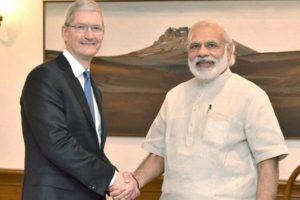
As the World Bank looks set to release its annual ranking of countries in the ease of doing business later this week, India expects to improve its position from last year’s 130 out of 189 economies. The optimism stems from the fact that, for a second straight year, the country expects its ranking in “getting electricity’’ to improve substantially on the back of some “remarkable work” done by states, a senior government official told FE.
Last year, India was placed at 70 of the 189 countries in “getting electricity”, compared with 99 in the previous year. This had helped the country improve its ranking in the overall ease of doing business by 4 notches.
The government also believes that its “targeted intervention” to improve performance in difficult parameters — including dealing with construction permits and enforcing contracts — where the country has been faring badly for years now will start to pay, the official said.
So while it will take some time to correct the course in certain legacy issues, especially in enforcing contracts, the DIPP believes the much-improved performance of states will be reflected in the country’s ranking for the years to come.
 For instance, while only two states (Gujarat and Andhra Pradesh) had scored over 70% in a 98-point action plan for the ease of doing business — jointly decided by them and the Centre — last year, as many as 16 states have scored over 70% so far this year, that too on a 340-point action plan, showed the latest data by the Department of Industrial Policy and Promotion (DIPP). Importantly, 10 states have scored over 90% so far this year (Andhra Pradesh and Telangana top the charts in 2016, each scoring over 99%).
For instance, while only two states (Gujarat and Andhra Pradesh) had scored over 70% in a 98-point action plan for the ease of doing business — jointly decided by them and the Centre — last year, as many as 16 states have scored over 70% so far this year, that too on a 340-point action plan, showed the latest data by the Department of Industrial Policy and Promotion (DIPP). Importantly, 10 states have scored over 90% so far this year (Andhra Pradesh and Telangana top the charts in 2016, each scoring over 99%).
The latest ranking of the World Bank takes into account reforms done up to the end of May, except in case of taxation.
The performance in access to electricity has been impressive, the official said. For instance, in Mumbai, the time required for getting a new electricity connection has been reduced to an average of around 15 days from 67 days earlier. The number of procedures involved has been cut down to just 3 from 7. Similarly, in Delhi, people can get connections in just 15 days now from as many as 140 days a few years earlier. The number of document required has been reduced to just 2 from 7 earlier. Access to electricity is crucial as it also has bearing on performance in some other aspects of the ease of doing business.
In “dealing with construction permits”, where the country was ranked at 183 of the 189 countries, the performance has improved. For instance, in Delhi and Mumbai, common online application form has been adopted for seeking construction permits. People don’t have to get no-objection certificates from anyone, as municipal corporations will get these certificates for them online. Earlier, some 18 no-objection certificates from different departments were required to be obtained by individuals for getting construction permits.
Also, in a metro like Delhi which has traditionally fared badly in handling construction permits, the documents required for this purpose has now been cut to just 14 from 39 earlier. Nine departments involved in the process of the sanction of buildings have been integrated online. The drawing of the construction plan is “auto-checked” by a software and no site inspection is necessary. Reforms on this parameter have been even quicker in other parts of the country.
On enforcing contracts in which India was placed at 178, the government has decided to set up commercial courts in a big way after the Commercial Courts, Commercial Division and Commercial Appellate Division of High Courts Bill was signed into a law on January 1.
Although the exact data on the formation of such courts are yet to be compiled precisely, roughly a dozen such courts are learnt to have been set up, especially in Delhi, Mumbai, Gujarat and Himachal Pradesh, to settle high-value business disputes.
All pending suits and applications on commercial disputes involving a claim of Rs 1 crore or more in high courts and civil courts will be transferred to the relevant commercial division or courts. The decision to set up such courts is in sync with the Narendra Modi government’s aim of making India a global arbitration hub. The government plans to introduce e-summon system and efforts are on to expedite the process of getting a verdict, said the official.
To boost cross-border trade, the number of documents required for trade has been restricted to just 2-3 from as many as a dozen in certain cases earlier. Importantly, the finance ministry is learnt to have sanctioned Rs 2,500 crore for the upgrade of the IT and some other systems of the Customs departments.








